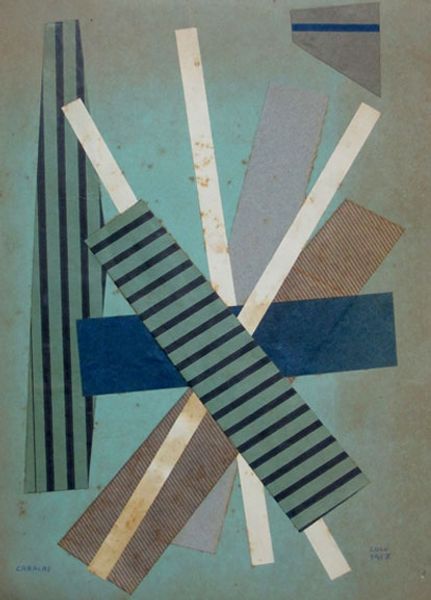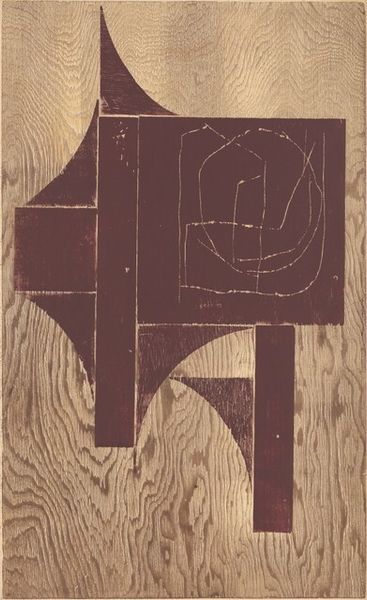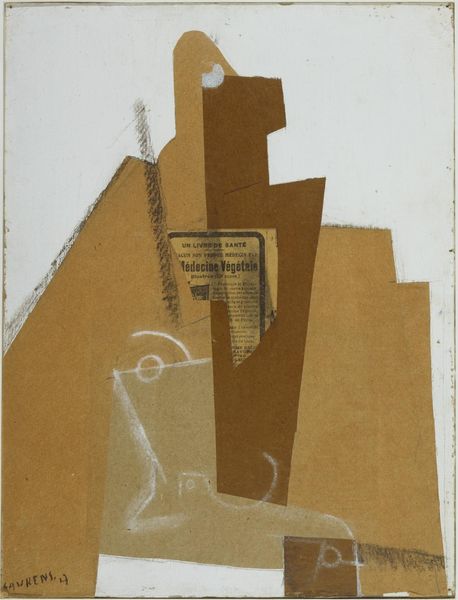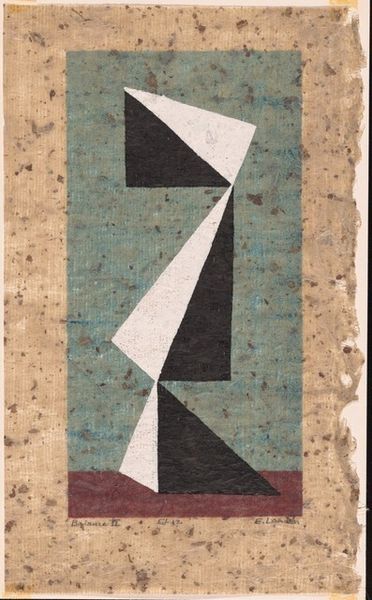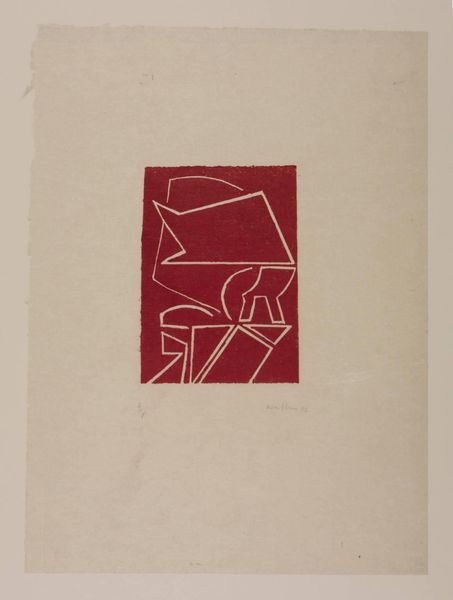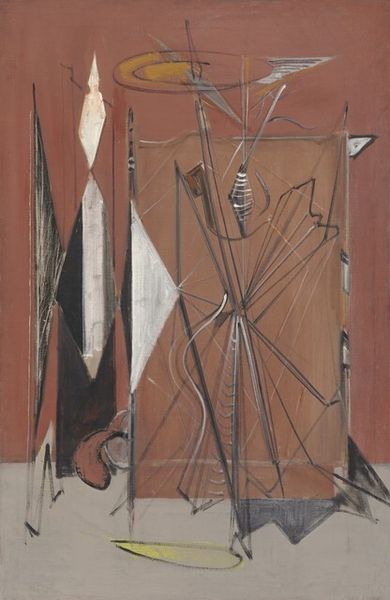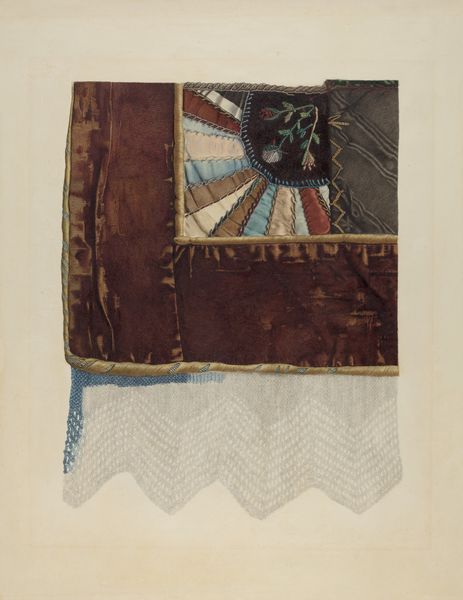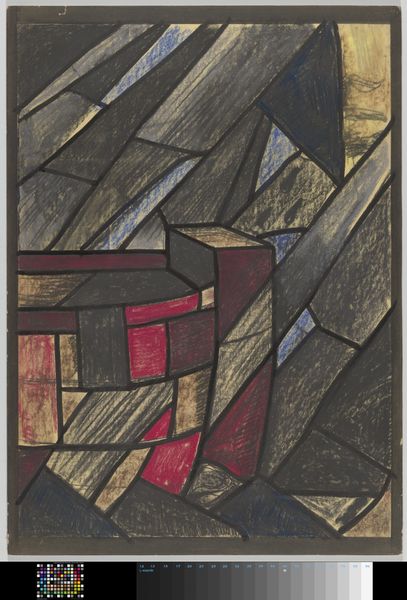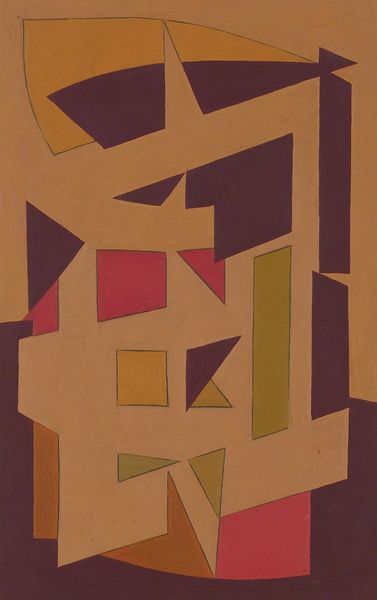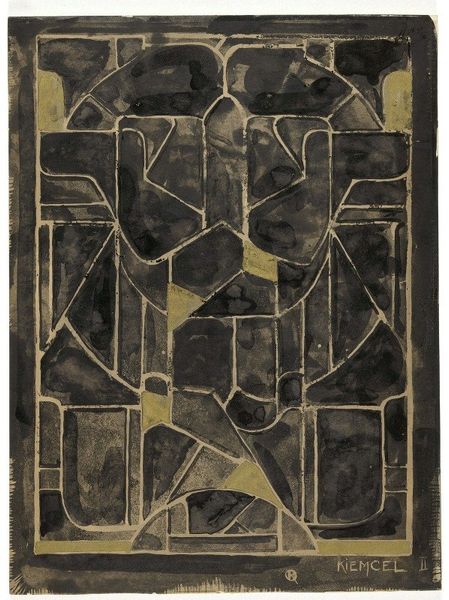
mixed-media, paper, ink
#
cubism
#
mixed-media
#
paper
#
ink
#
geometric
#
abstraction
#
cardboard
#
watercolor
Dimensions: overall: 130 x 97 cm (51 3/16 x 38 3/16 in.) framed: 154.9 x 122.5 x 6.3 cm (61 x 48 1/4 x 2 1/2 in.)
Copyright: National Gallery of Art: CC0 1.0
Editor: This is Picasso's "Guitar," created in 1926 using mixed media like paper and ink. It feels almost like a collage of layered thoughts, very geometric. What strikes you about it? Curator: Well, first, consider the guitar itself. What does a guitar symbolize? Often, music, merriment, perhaps even a touch of romanticism. Now, Picasso disassembles it. Why? It's not merely about *seeing* a guitar, but *knowing* a guitar. Editor: Knowing, not just seeing... that makes me think. So, the abstraction is key to understanding? Curator: Precisely! These fractured forms, they speak to cultural memory. Musical instruments are frequently signifiers of harmony and cultural identity, consider folk music. How does the breaking apart affect this significance? Editor: It almost negates it? It presents it as incomplete, like a deconstructed idea of music and folk culture. Curator: Exactly! He isn't destroying it, but he's inviting us to reconsider its constituent parts, both literally and figuratively. The layering, the overlapping… It is about what happens in between or what we fill in based on our association with that instrument. Do you see any potential visual allusions here? What other images are brought up from it? Editor: I hadn't thought about other images but the dark shape in the brown rectangle in the center also looks very shield-like to me? Curator: A fantastic observation, an icon can have several simultaneous cultural contexts! Editor: That’s such a richer way to view the piece than just as an abstract guitar. Thank you for this breakdown! Curator: My pleasure, noticing symbols makes art viewing so much more intriguing, right?
Comments
No comments
Be the first to comment and join the conversation on the ultimate creative platform.
